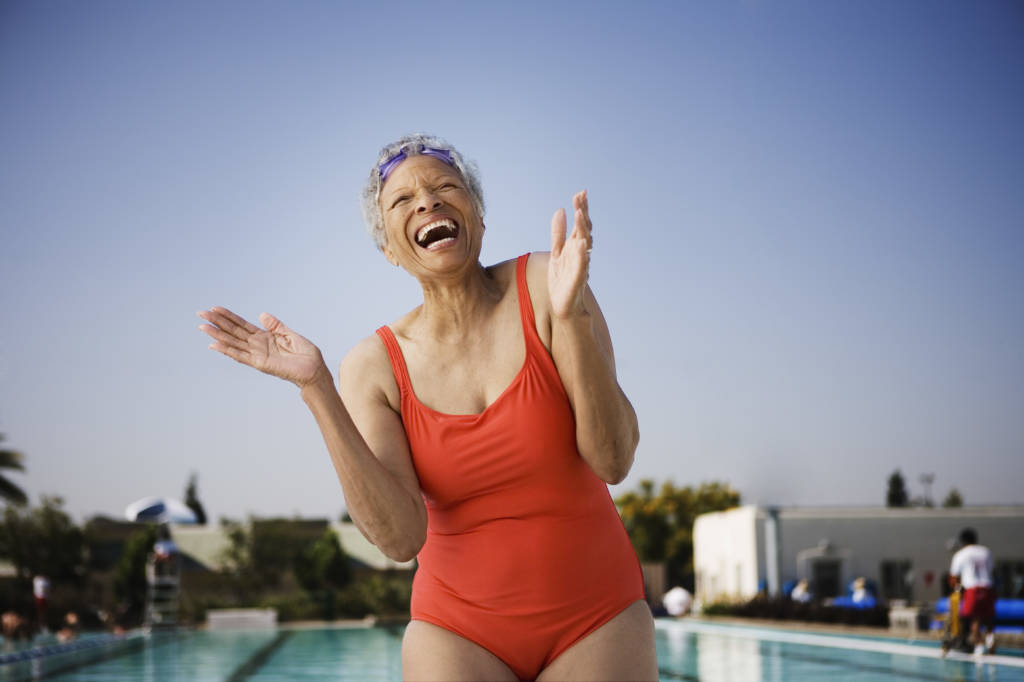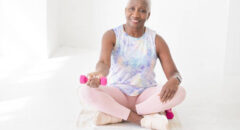
For centuries, many men and women have been trying to find the "fountain of youth" -- a mythical place that with one drink, it automatically brings you back to your youth. It would turn an old man to an energetic 20-year-old or an middle-aged woman to a teenager.
While nobody has found this mythical fountain, many have tried to create creams, drinks, or even surgical procedures to turn back the clock. But none of them have ever really worked. But science has found an actual system that works: exercise! But here's the catch: it's a certain kind of exercise.
"We all know people that seem younger than their actual age. The more physically active we are, the less biological aging takes place in our bodies," says Larry Tucker, a professor of exercise science at Brigham Young University in Utah.
He and his colleagues analyzed data from a survey of more than 5,800 Americans. The researchers concluded that people with consistently high levels of physical activity have significantly longer "telomeres" than those who are moderately active or inactive.
Telomeres are the protein endcaps on chromosomes. Each time a cell replicates, a tiny bit of the endcap is lost. That means the older you get, the shorter your telomeres.
But telomeres in adults with high levels of physical activity had seven years less aging than those in moderately active adults. And the advantage was a little over nine years compared with inactive adults, the researchers concluded.
The study authors defined "highly active" as at least 30 minutes (women) or 40 minutes (men) of jogging a day, five days a week.
"If you want to see a real difference in slowing your biological aging, it appears that a little exercise won't cut it. You have to work out regularly at high levels," Tucker said.
"We know that regular physical activity helps to reduce mortality and prolong life, and now we know part of that advantage may be due to the preservation of telomeres," Tucker added.
Here are three exercises that are your personal time machine to help turn back the clock giving you more years on your life:
1. Glute Bridge
What it does: Some of the most noticeable age-related declines in strength happen in the muscles that propel us forward, like the glutes, says Kyle Stull, senior master trainer and faculty instructor for the National Academy of Sports Medicine. In addition to building strength in the glutes, this move also works your core muscles, so you can maintain good posture and balance.
How to do it: Lie on the ground, hands at your sides, feet on the ground and knees bent at 90-degree angles. Squeeze your core and your glutes to lift your hips toward the ceiling. Try to get them high enough so there’s a straight line from your chest to your knees. Hold for 5 seconds, bring your hips back to the floor (still squeezing your core and glutes), and repeat for 12 reps, then do two more sets.
2. Hip Flexor/Hamstring/Glute Stretches
What it does: Focuses on tightness in your hip flexors, your hamstrings and your glutes, which all get tighter and weaker with time (especially if you spend a lot of that time sitting).
How to do it: Find a table that’s about hip height (if that’s too high for you, it’s fine to use a lower surface, like a chair, at first). Place your right foot on top of it and, keeping your left foot on the ground and left leg straight, bend your right knee and lean in toward your right knee, keeping your back straight as you do it. You should feel a stretch in the front of your left hip. Hold for 10 seconds, then switch sides. Next, grab a chair and place your right foot on the seat. Flex your right foot, keep both legs straight and stick your butt out behind you as you hinge forward from the hip and keep your back straight, folding your torso over your right leg until you feel a stretch in your right hamstring. Hold for 10 seconds, then switch legs. Finally, sit on the chair and place your right ankle just above your left knee, with your left foot still on the ground. Let your right knee drop toward the ground, feeling the stretch in your right glute. (You can gently press on your right knee with your hand to deepen the stretch). Hold for 10 seconds, then switch legs.
3. Chin Tuck/Upper Trap Stretch/Shoulder Circles
What it does: This sequence releases tightness in the back of your neck, your shoulders, and the muscles that connect your shoulders to the base of your skull. Not only do these areas get tighter with age, but sitting all day (especially when you’re slumped forward) speeds up that process.
How to do it: While you’re sitting in a chair with good posture (shoulders back and down), slide your head back like you’re trying to give yourself a double chin. Keep your head there, hold onto the side of the chair with your right hand and tilt your head toward your left shoulder. You should feel a stretch in the right side of your neck. Hold for 10 seconds, then switch sides. Finally, with your chin still tucked, do 5 to 10 backwards shoulder circles. Repeat the sequence 3 to 5 times throughout the day.








